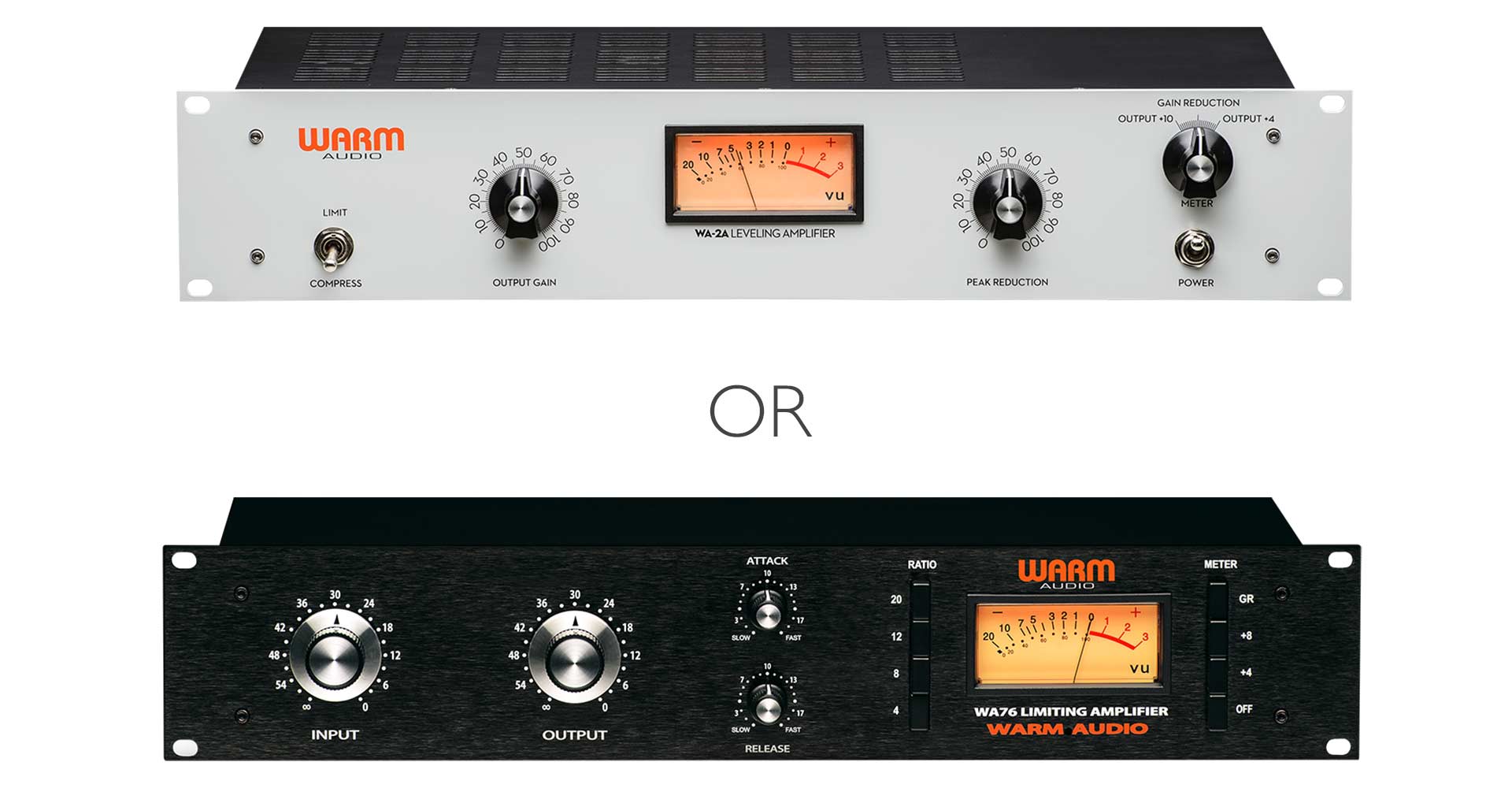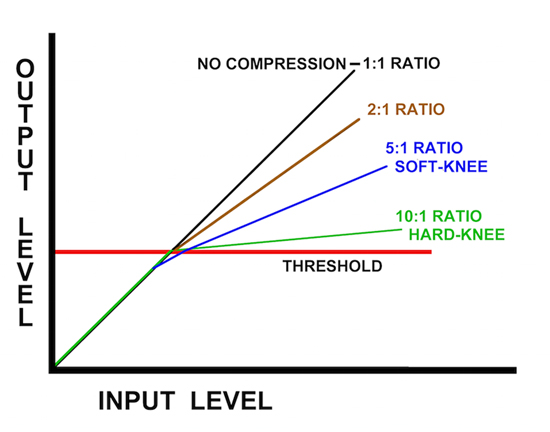Should I buy a WA-76 or WA-2A?

Warm Audio Compressors
WA-76 or WA-2A?
These two compressors are very different in the way they work and in the way they affect audio. In this article we’ll go through each compressor in detail to aid you in your choice.
To fully understand why one compressor would be a better choice for you over the other let’s first have a look at what audio compression is. In its most simplified form, a compressor reduces the dynamic range of an audio signal. The process is called Gain Reduction and is the most important concept you need to grasp in order to understand audio compression. A compressor will use Threshold and Ratio to determine how much compression is taking place. Threshold is the point at which compression starts to work and ratio is the amount of compression taking place. Imagine an invisible line, we’ll call that the Threshold. Once an audio signal goes over that line it is then squashed back down towards it by the predetermined ratio. The higher the Ratio the more compression, the lower the Threshold more of the signal will be compressed.

Everything that is sent to a compressor is called the Program Material, be it a vocal, drum or guitar. When a signal enters the compressor it is split, one copy is sent to a variable gain amplifier and the other to a side-chain where a circuit controlled by the signal level applies the required gain to an amplifier stage. Some compressors will allow you to interrupt this side-chain to manipulate how the compressor will be working. You could inject a high pass filter set to 100 Hz to tell the compressor to only compress audio above that particular frequency. You could also inject a kick drum signal to tell the compressor to only compress when that kick drum hits. This is called ducking.
There are a few different methods of achieving Gain Reduction. Some compressors rely solely on tubes, some use a photosensitive cell, (OPTO) and others use a Field Emitting Transistors or FET’s as the system to apply gain control.
WARM AUDIO WA-2A

The Warm Audio WA-2A is a faithful reproduction of the famous Teletronix LA2A compressor. It uses an optical cell as the compression detection and has input and output valves in the audio path. An optical cell is particularly slow as a detection method and therefore applies gain control in a very gentle way. If you want a smoother, less aggressive compression sound then the WA-2A would be the right choice. It works great on vocals and strings because of its delicate application of compression. People also get great results using the WA-2A on bass and guitar.
The WA-2A In Use
The WA-2A is probably the easier of the two compressors to use. You essentially have 2 modes: Limit and Compress. These two modes switch between more or less ratio. Limiting is just compression with a higher Ratio value. I find Compress, i.e. less ratio to be my favourite mode as most of the time I just want to delicately control a vocal performance. Make sure you have Gain Reduction selected by the 3 position Meter switch and send the WA-2A a vocal. Slowly turn up the Peak Reduction knob until the vocal starts to tickle the VU needle. If you want a very transparent sound make sure the needle only moves on higher dynamic peaks. Due to the nature of the OPTO cell though, the WA-2A can be very forgiving. You can get away with pushing the Peak Reduction knob so that more of the vocal is being compressed without any adverse pumping side effects. By turning up the Peak Reduction knob you are in this instance lowering the Threshold. At this point you may notice a lowering of volume. This is because the WA-2A is reducing gain. The Output Knob will then bring the output level back up to make up for any level lost to compression. The result should be a smooth, flattering almost transparent sound. That’s it – simple. Use this same technique on whatever instrument you want to compress.
WARM AUDIO WA-76

The WA-76 is modeled on the classic 1976 Universal Audio 1176 Rev D. Unlike the WA-2A, the WA-76 compressor can be a little trickier to get to grips with but will reward you with a fat, punchy sound that is unmistakably 1176. The WA-76 is a FET (Field Emitting Trasnistor) compressor and therefore is known for being incredibly fast and punchy. Because of the use of CINE MAG input and output transformers and Class A circuity, the WA-76 has a very distinctive and sought-after sound.
As you may expect the WA-76 is the go-to compressor for any instrument that has a fast attack and a huge dynamic range, like drums and percussion. It’s great for taming explosive transients. In the right hands the WA-76 can also be particularly good on vocals. It’s a very versatile compressor and is why it’s very sort after in professional studios.
The WA-76 In Use
The first thing you want to do when you are using this compressor is make sure the VU Meter GR (Gain Reduction) button is selected. This will show you when the compressor is compressing and how much compression is taking place. As you drive the Input knob, more audio is fed to the compressor for gain reduction. In this instance turning up the Input knob can be thought of as lowering the Threshold. That is more of the signal is being pushed over that imaginary line. The amount of compression is determined by the Ratio Buttons. You can even push all buttons in at the same time to get a very aggressive squashed sound. Try it. The Output Knob will bring the volume back up after gain reduction has taken place. Unlike the WA-2A compressor the WA-76 features an envelope control to shape the signal. Take note though the knobs for Attack and Release are back to front compared to other compressors on the market. That is, FAST is all the way clockwise and SLOW is all the way Counter Clockwise.
I favour this compressor on drums. I like to make the drums pump by backing off the Attack and setting a fast Release. Feed a group of drums to the WA-76 and keep the input knob down. Set the VU switch to GR and set the Attack knob to about 7. Set the Release to its fastest setting and Ratio to 8. Now bring up the Input knob so that the VU needle is hitting about -5. You should hear a very powerful pumping drum track. You will need to adjust the Output knob to compensate for the loss of level.
The Judgement
You can obviously use either of these compressors on whatever audio signal you like, however as you can see from the descriptions above, they both offer up very different and distinct sound profiles. If you can only afford one of these though get yourself the WA-2A for a very smooth transparent sound, but if you want something more aggressive with plenty of punch and more physical control over the envelope get the WA-76.
